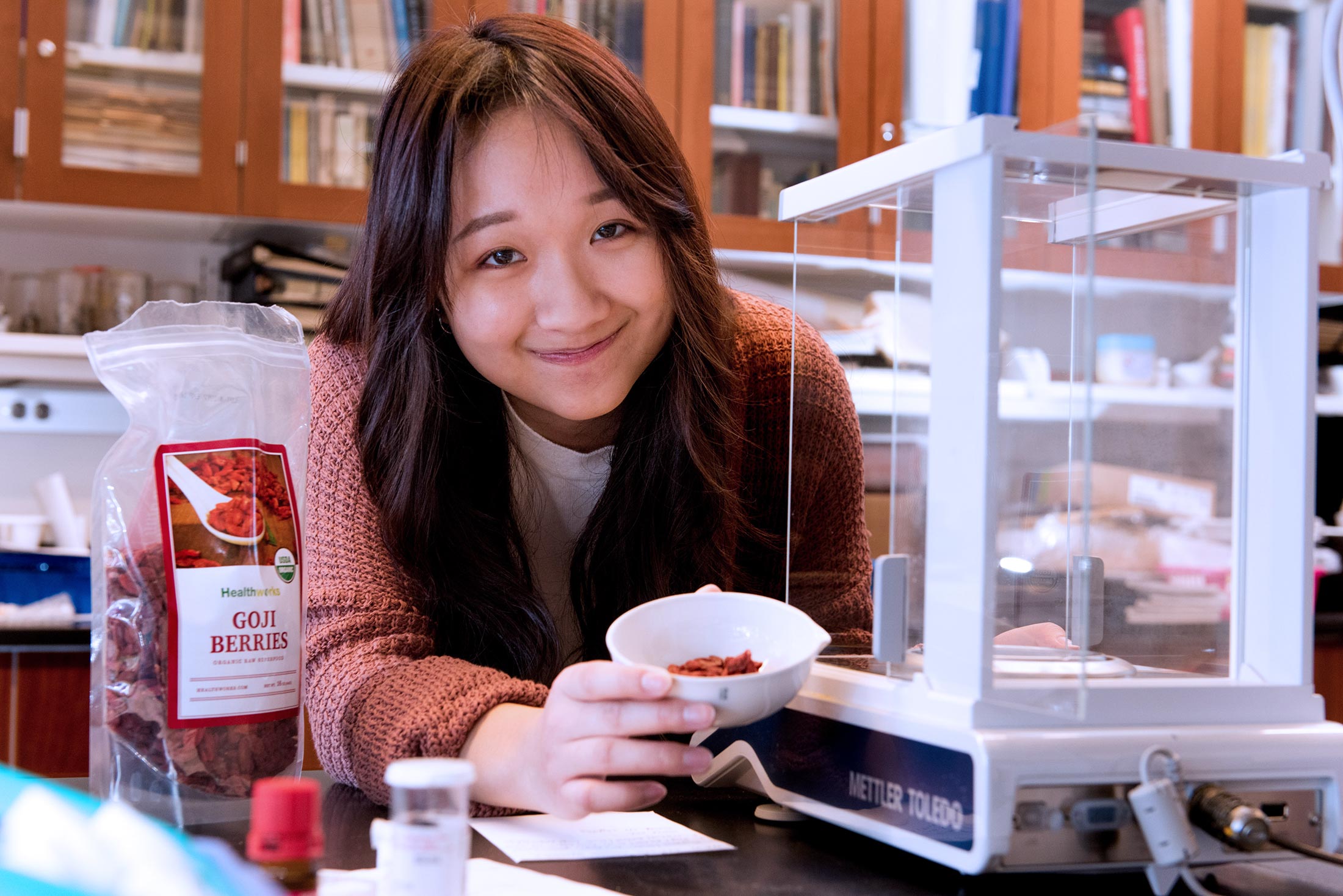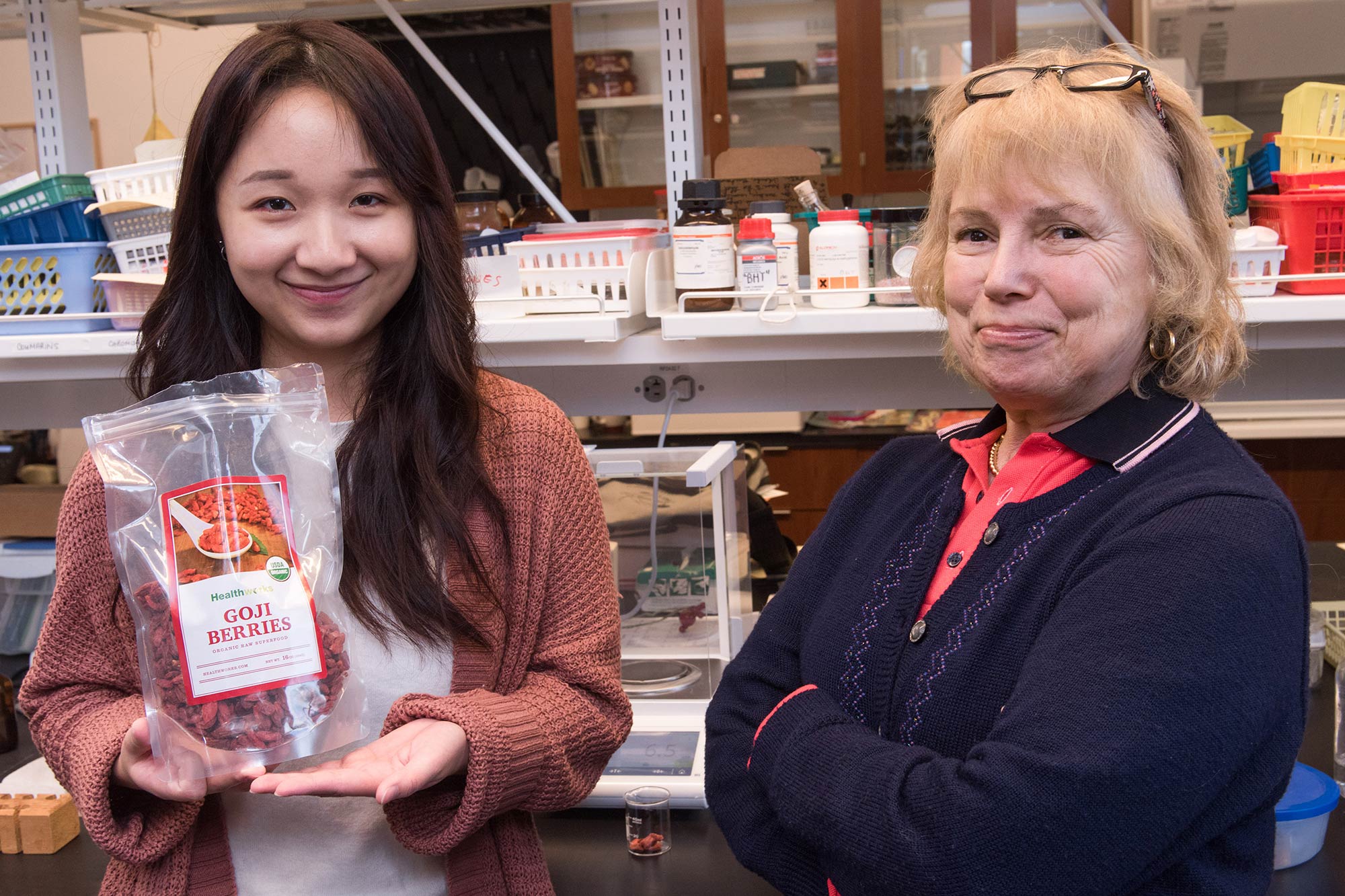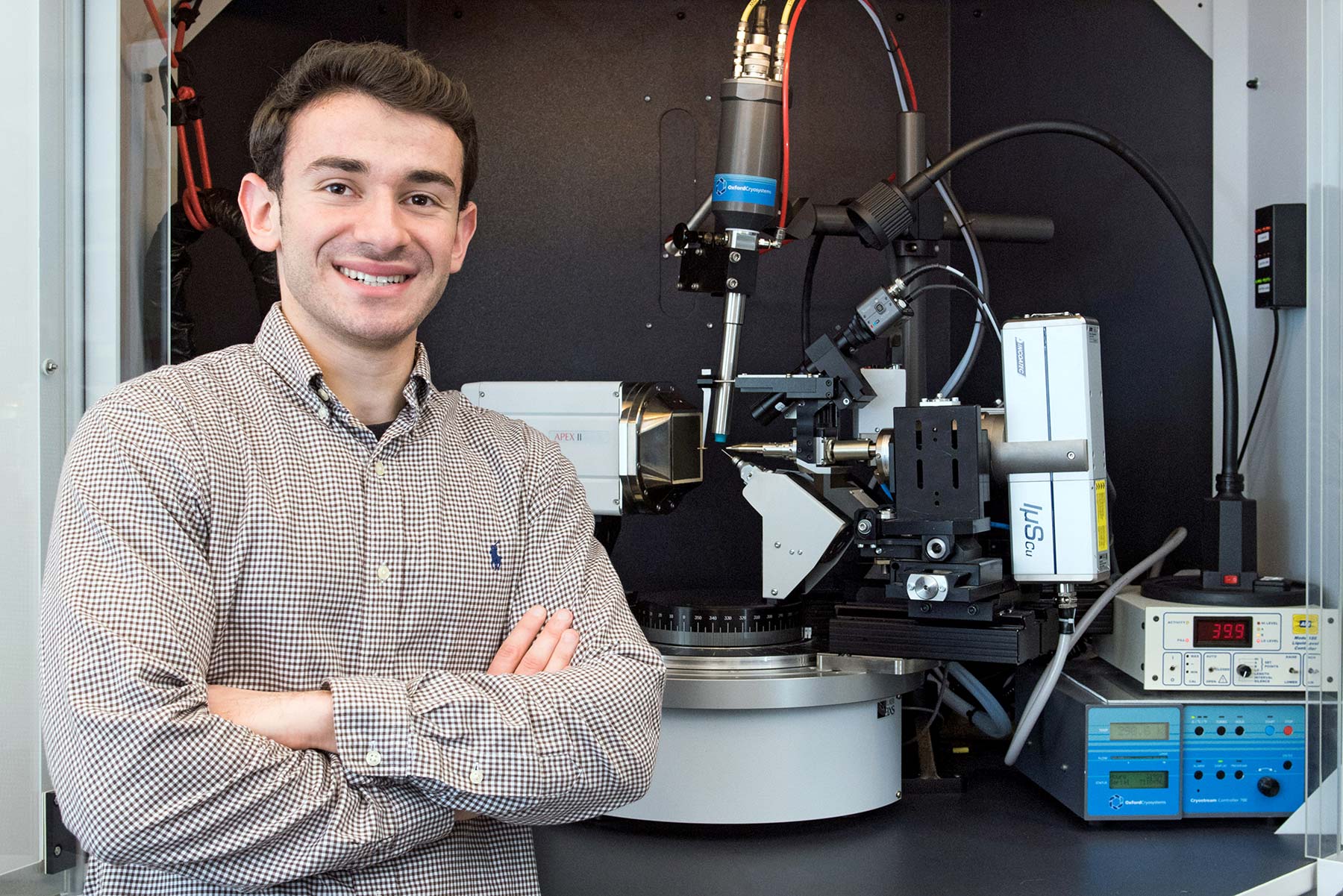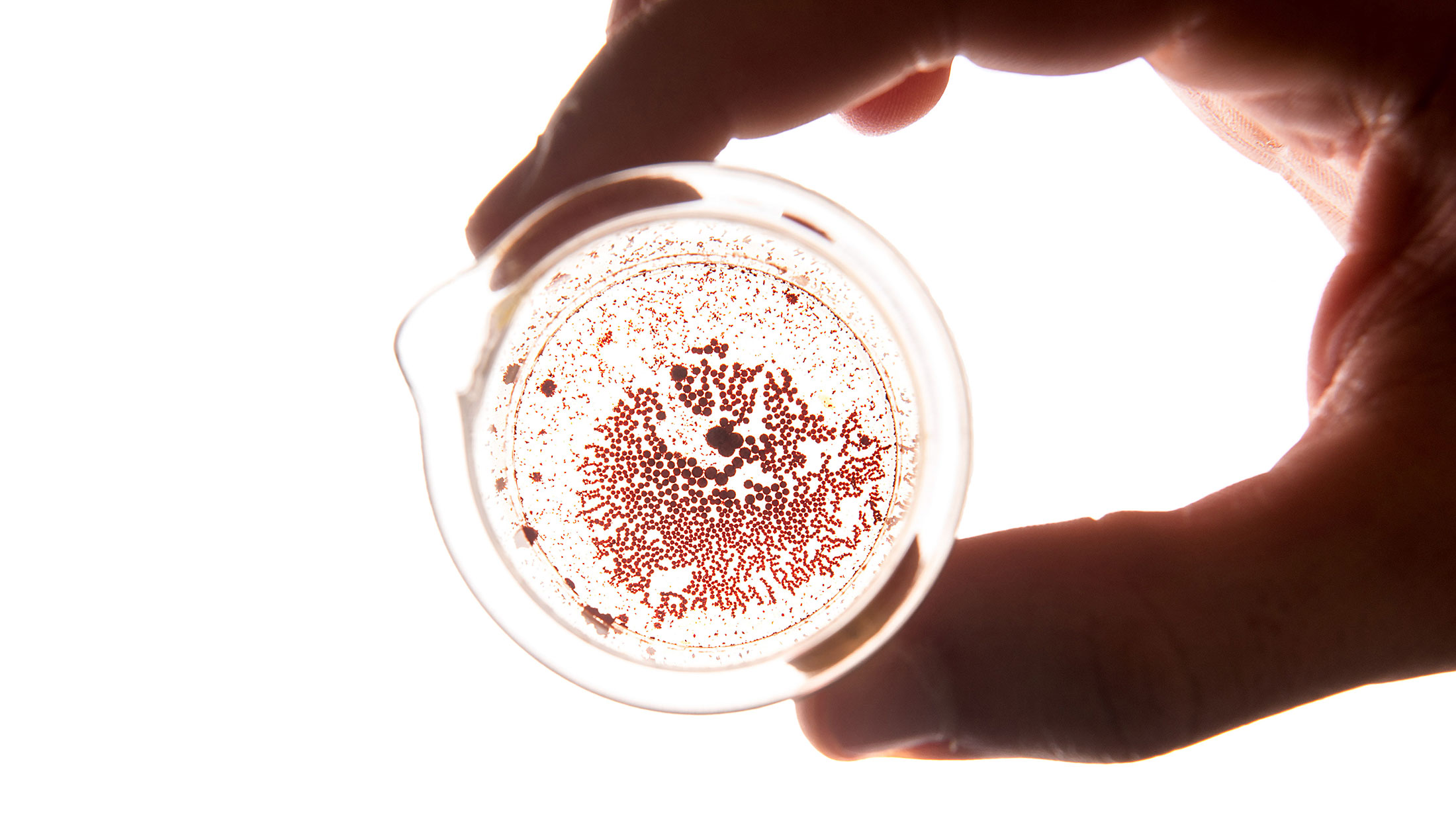The Science behind Centuries of Traditional Medicines
The Science behind Centuries of Traditional Medicines
For centuries, herbal remedies and plant-based medicines have been an essential component of healing traditions in many cultures, but hundreds of these substances have yet to be investigated scientifically. In Chemistry Prof. Miriam Rossi’s lab, two senior chemistry majors are investigating the structure and bioactivity of several plant-derived compounds to assess their antioxidant and anticancer properties.

Growing up in Staten Island, Kelly Wen ’18 was routinely administered herbal remedies by her Chinese immigrant parents. “You’ve got a headache? Brew some goji berry soup, and the headache miraculously goes away,” says Wen. “Is that a placebo effect, or are there actually compounds in these berries that contribute to health and wellness?”
That’s one of the questions Wen chose to investigate for her senior thesis in chemistry under the direction of Prof. Rossi. She’s looking at specific compounds in several plants widely used in Traditional Chinese Medicine (TCM)—Lycium barbarum and Lycium
The goji berry is purported to improve eyesight, eliminate toxins from the body, and increase overall health and longevity. Monnier’s
Wen is analyzing the chemical composition and structure of three constituents:

“What we’re finding so far is that there definitely is a high antioxidant content in these constituents,” says Wen. “Antioxidants are important because they inhibit the number of free superoxide radicals in your system.”
The first person in her family to go to college, Wen applied to Vassar through QuestBridge, a program that connects high achieving, low-income students with top colleges and universities. “I knew I wanted to study science, but I definitely wasn’t sure what I wanted to do when I came in,” she says. “Most of the other schools I applied to wanted you to narrow your path and stick to science. Even though I have taken a lot of science classes, I’ve also taken a lot of art classes. I’m getting a correlate in studio art. And I learned to swim last semester! And I got to go JYA to London! I don’t think I would have had these opportunities anywhere except Vassar.”

Wen’s fellow chemistry major, Aron Sulovari ’18, is investigating a compound called
Estimates of the number of species of fungi in the world vary wildly—from 15,000 to 5.1 million! We may not know how many species there are, but scientists seem to agree that mushrooms are a huge untapped source of potential pharmaceuticals.
“Hispolon is interesting because it is structurally very similar to curcumin,” Sulovari says. Curcumin, a compound found in the spice turmeric, has long been used in South Asian countries as a remedy for numerous ailments. Over the last 20 years, there has been an explosion of interest in curcumin with numerous studies on its bioactivity—including a study by Prof. Rossi et al. published in Inorganic Chemistry.
According to Sulovari, the problems researchers have been running into with curcumin are related to its solubility and bioavailability. “This is where

The
Sulovari has been interested in science as long as he can remember and expects to begin medical school next fall. He attended a special magnet school in high school where he actually majored in medicine—“We had
Sulovari’s other major commitment is to rowing. “I didn’t row in high school. During orientation, I heard the rowing team tabling at the student